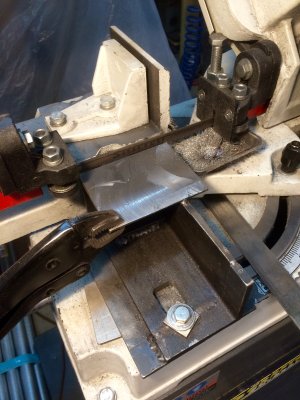So I took a page off some body on the Internet and made an out feed shelf on the drop side of the blade. It's about 1/8" away from the blade and I can clamp small parts to it. Sometimes it works better than trying to fool around with extending the jaws with extra stock.vs. my saw jaws
The vise inside the vise is a good idea though - I'll have to try it.

